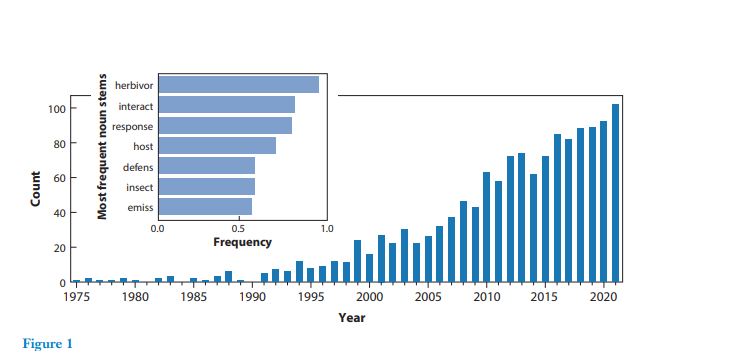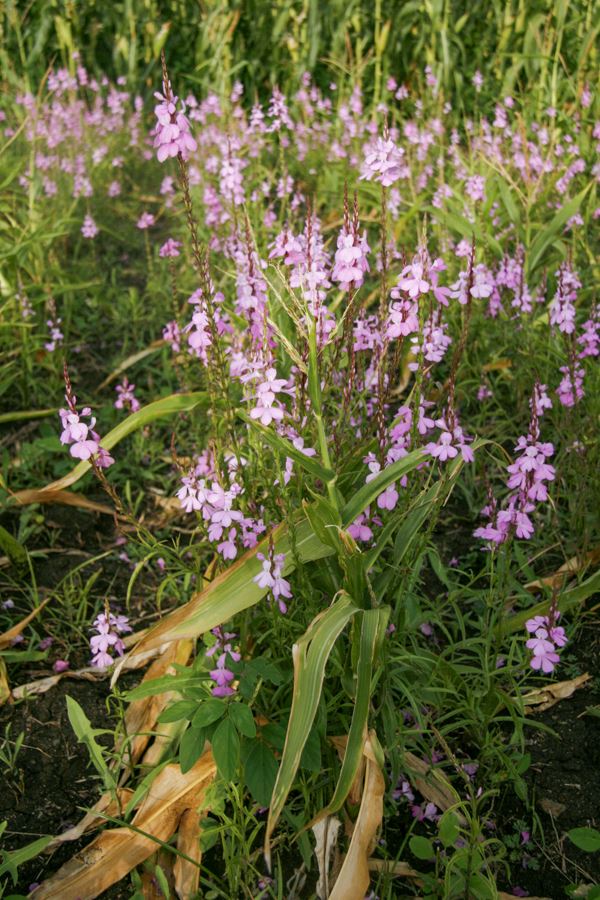Plant volatiles comprise thousands of molecules from multiple metabolic pathways, distinguished by sufficient vapor pressure to evaporate into the headspace under normal environmental conditions. Many are implicated as ecological signals, but what is the evidence—and how do they work? Volatiles diffuse, are carried by wind, and may be taken up by other organisms or degrade with exposure to atmospheric ozone, radicals, and UV light; visual signals such as color are not subject to these complications (but require a line of sight). Distantly related plants—and nonplants—produce many of the same volatiles, yet specific compounds and blends may be distinct. Here, I present a quantitative review of the literature on plant volatiles as ecological signals, illustrating a field that has focused on developing ideas as much as reporting primary data. I discuss advantages and constraints, review recent advances, and propose considerations for primary studies to elucidate particular functions of plant volatiles.
Authors: Meredith Christine Schuman
Contact address: meredithchristine.schuman@uzh.ch
Institution: University of Zurich, Switzerland; www.maseno.ac.ke
Twitter name of the institution: @UZH_en
Twitter link: https://twitter.com/UZH_en
Available downloads:


